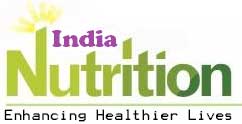Breastfeeding is a crucial concept of parenting after childbirth. For approximately first six months, breast milk should be the primary and the only source of nutrition for the new born. There are also a lot of facts, myths and stigmas associated with breastfeeding and the only way of putting them forward is by talking about breastfeeding openly. Although it is a mother’s personal decision to breastfeed her baby or not, breast milk offers a number of benefits for the new born baby. Breast milk has all the necessary nutrients present in it that are required for a healthy growth and development of the baby.
Having a new born child to look after doesn’t mean that a mother must stop working on her health and fitness. Most of the time, mothers think twice about exercising as they feel that it would have an impact on the supply of their breast milk. However, exercising after childbirth doesn’t have any adverse effect on the breast milk supply, its nutritional value or taste.
Exercise After Childbirth
If a mother had a normal delivery without any complications, then she can start exercising within a few days of delivery after consulting her doctor. But, if one had a C-section delivery, then she will have to wait until her body heals. If the mother is still sore after the delivery or if she is bleeding heavily, or she has a breast infection, then she should not begin to exercise in such a situation.
How to Start Postnatal Exercise
It is crucial for a mother’s body to get enough rest and establish her breast milk supply during the first few weeks after childbirth. So, it is recommended to start exercising for a short period of time without exerting the body much. After a few days, she can increase the duration of workout and its intensity gradually, day after day or week after week.
A mother should always keep in mind that stress and fatigue can decrease the supply of her breast milk and can put her body at risk for breast problems or breast infections. So, she should not overdo the exercises. If she feels too tired, then she should take some breaks in between stop exercising.
Exercise and Breastfeeding
Performing light or moderate exercises is considered safe and healthy but heavy exercises during breastfeeding phase may lead to breast infection and cause a reduction in breast milk supply. A heavy exercise routine can change the breast milk taste as it causes the lactic acid to build up in the body and enter the breast milk. This can make the sweet breast milk a bitter taste. The taste of breast milk is also affected by the sweat released by the body. It may make the breasts taste salty. In such a case some may refuse to breastfeed.
5 things a breastfeeding mother should know about exercising
- Always Stay Hydrated: Maintaining the hydration in the body is very important while breastfeeding and exercising. It is necessary to keep your body hydrated as it keeps the body energized. One can sip water, coconut water, lemon water, soups, etc. from time to time.
- Do not compromise with the calories: Breastfeeding can burn approx. 500-700 calories a day. Therefore, it is essential for the mother to make sure that her daily intake of calorie is enough so that she doesn’t feel tired during the day.
- Time management: A number of responsibilities come along the baby after delivery. So, a mother should be able to manage her time well to take care of her body while performing the new roles of a mother.
- Avoid sudden weight loss: A sudden weight loss may cause the body fat to transfer into the bloodstream. This will affect the breast milk because of increase in the level of toxins. Therefore, go slowly with the weight loss journey after delivery.
- Go easy on the exercises: Remember that your body is still under the process of healing after the delivery. Therefore, do not overexert the body and go easy on the exercises.
Benefits of Exercising while breastfeeding
There are a number of benefits to exercise while breastfeeding. It’s good for blood circulation, strength, muscles and the mood. Here are some benefits of exercising for breastfeeding mothers:
- While breastfeeding, regular exercise and a healthy and nutritious diet can help a mom lose her pregnancy weight.
- It may help her to sleep better.
- It gives enough energy to the mom to perform her roles.
- It helps in relieving stress.
- It improves a mother’s overall health and well-being.
- It helps in preventing heart disease.
- It raises the level of prolactin in the body, which will help with breast milk production.
- It promotes the release of endorphins that may help in overcoming the baby blues and make her feel happy.
- It increases her lean muscle and keeps her fit.
Things to keep in mind
As a mother starts with her exercise journey, there are a few things that she should always keep in mind. Here are some tips to follow to keep herself comfortable and safe:
- Before starting with an exercise program, she should consult your doctor.
- Before beginning the work out, breastfeed the baby or pump your breast milk. Breasts full of milk can make her feel uncomfortable.
- If a mother develops breast infection, she should limit or stop doing upper-body exercises, especially weight lifting.
- Initially, start working out for a short period of time. After a few days or a week, gradually increase the activity level.
- Stop exercising if there’s a feeling of pain or dizziness, shortness of breath, palpitations or an increase in vaginal bleeding.
- Spend a few minutes warming up before beginning the routine to prevent injury.
- Wear a supportive bra that fits the breast properly. A very tight or very loose bra can be uncomfortable and put you at risk of breast infection.
- Wear breast pads if one experiences leaking of breast milk during workout.
- Drink plenty of water to avoid dehydration.




















